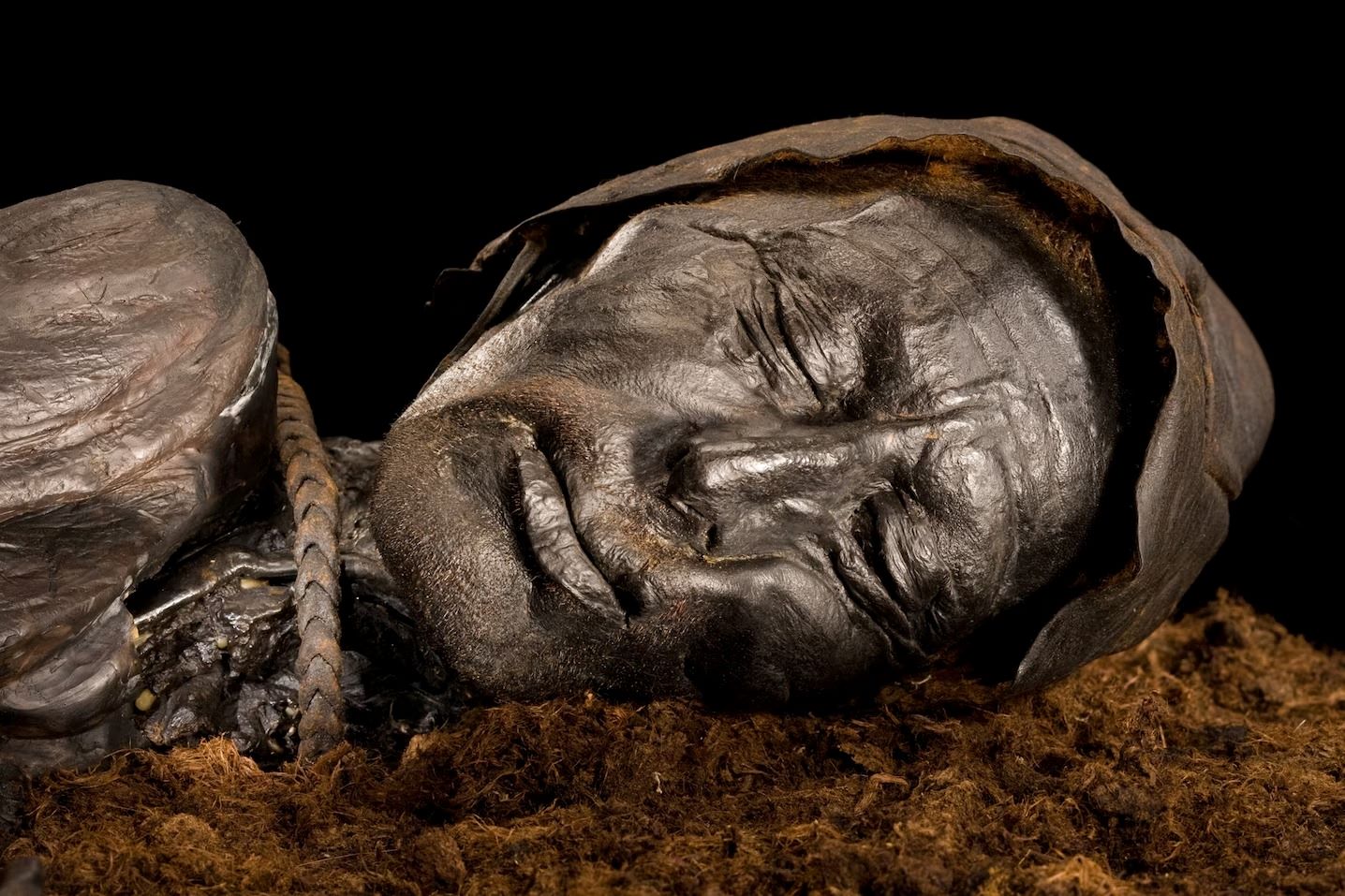
Who was the Grauballe Man? The Grauballe Man is one of the best-preserved bog bodies ever found. Discovered in 1952 in a peat bog near the village of Grauballe in Denmark, this ancient man lived during the Iron Age, around 2,300 years ago. His body was so well-preserved that even his fingerprints remained intact. Scientists believe he was around 30 years old when he died, and his death was likely a ritual sacrifice. The Grauballe Man provides a fascinating glimpse into the past, offering clues about ancient customs, diet, and daily life. Let's dive into 36 intriguing facts about this remarkable archaeological find.
Key Takeaways:
- Grauballe Man, a well-preserved ancient body found in Denmark, provides valuable insights into Iron Age life, diet, and cultural practices, sparking interest in bog bodies and ancient preservation techniques.
- Grauballe Man's discovery has not only advanced scientific knowledge but also influenced culture, inspiring documentaries, educational programs, and conservation efforts, making him a symbol of Denmark's rich archaeological heritage.
Who is Grauballe Man?
Grauballe Man is one of the most well-preserved bog bodies ever found. Discovered in Denmark, this ancient human has provided a wealth of information about life during the Iron Age. Let's dive into some fascinating facts about Grauballe Man.
- Grauballe Man was discovered in 1952 in a peat bog near the village of Grauballe, Denmark.
- His body is estimated to be over 2,300 years old, dating back to the early Iron Age.
- The peat bog's acidic environment preserved his body remarkably well, including his skin, hair, and nails.
- Grauballe Man's hair was originally red, but the bog's conditions turned it a dark brown.
- He was found lying face down, with his arms stretched out in front of him.
- His throat had been cut from ear to ear, indicating a violent death.
- The cut on his throat was so deep that it severed his windpipe and esophagus.
- Grauballe Man's stomach contents revealed his last meal consisted of porridge made from grains and seeds.
- His teeth showed signs of wear and tear, suggesting he was around 30 years old at the time of his death.
- The body had no signs of decay, thanks to the bog's preservation properties.
The Significance of Grauballe Man
Grauballe Man offers a unique glimpse into the past, shedding light on ancient customs, diet, and even health. Here are more intriguing details about this Iron Age individual.
- His hands were well-manicured, indicating he did not engage in heavy manual labor.
- Grauballe Man's nails were perfectly preserved, showing no signs of disease or malnutrition.
- The body was found with no clothing or personal items, suggesting he may have been a ritual sacrifice.
- Pollen analysis around the body indicated he was buried in the spring or early summer.
- His bones showed no signs of fractures or injuries, apart from the fatal throat wound.
- Grauballe Man's skin was tanned and leathery due to the bog's acidic environment.
- The body was initially mistaken for a recent murder victim before its true age was determined.
- Grauballe Man's discovery led to increased interest in bog bodies and their preservation.
- He is currently housed at the Moesgaard Museum in Denmark, where he remains a popular exhibit.
- Modern forensic techniques have been used to study Grauballe Man, providing new insights into his life and death.
Scientific Studies on Grauballe Man
Scientific research on Grauballe Man has revealed fascinating details about his life and the era he lived in. Here are some key findings from these studies.
- CT scans of Grauballe Man's body showed no signs of disease or malnutrition.
- Isotope analysis of his hair indicated he consumed a diet rich in grains and vegetables.
- DNA analysis revealed he belonged to a genetic group common in Northern Europe during the Iron Age.
- Grauballe Man's teeth had no cavities, suggesting a diet low in sugar.
- His bones showed signs of arthritis, indicating he may have experienced joint pain.
- The body had no signs of defensive wounds, suggesting he did not resist his attackers.
- Grauballe Man's well-preserved brain allowed researchers to study its structure and condition.
- Analysis of his stomach contents provided insights into Iron Age agricultural practices.
- The body was found with no signs of clothing, leading to theories about ritualistic practices.
- Grauballe Man's discovery has helped archaeologists understand the social and cultural aspects of Iron Age Europe.
Cultural Impact of Grauballe Man
Grauballe Man has not only contributed to scientific knowledge but also captured the public's imagination. Here are some ways his discovery has influenced culture and society.
- Grauballe Man has been featured in numerous documentaries and books about bog bodies.
- His discovery sparked interest in other bog bodies found across Europe.
- The preservation of Grauballe Man has inspired advancements in conservation techniques for ancient remains.
- He has become a symbol of Denmark's rich archaeological heritage.
- Grauballe Man's story has been used in educational programs to teach students about the Iron Age.
- His well-preserved state continues to attract researchers and visitors from around the world.
The Legacy of Grauballe Man
Grauballe Man, discovered in 1952, continues to captivate historians and archaeologists alike. His remarkably preserved body offers a unique glimpse into Iron Age Europe. The peat bog's acidic environment played a crucial role in preserving his skin, hair, and even stomach contents, providing invaluable insights into his diet and lifestyle.
The mystery surrounding his death—whether a ritual sacrifice or a violent crime—adds an intriguing layer to his story. Modern technology, like CT scans and forensic analysis, has allowed researchers to piece together more details about his life and death, making Grauballe Man a subject of ongoing fascination.
His legacy extends beyond academic circles, sparking public interest and inspiring exhibitions worldwide. Grauballe Man serves as a poignant reminder of our shared human history, bridging the gap between ancient times and the present. His story continues to unfold, offering new discoveries with each passing year.
Frequently Asked Questions
Was this page helpful?
Our commitment to delivering trustworthy and engaging content is at the heart of what we do. Each fact on our site is contributed by real users like you, bringing a wealth of diverse insights and information. To ensure the highest standards of accuracy and reliability, our dedicated editors meticulously review each submission. This process guarantees that the facts we share are not only fascinating but also credible. Trust in our commitment to quality and authenticity as you explore and learn with us.


